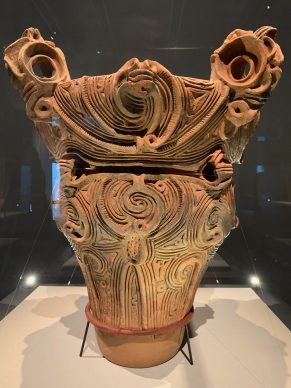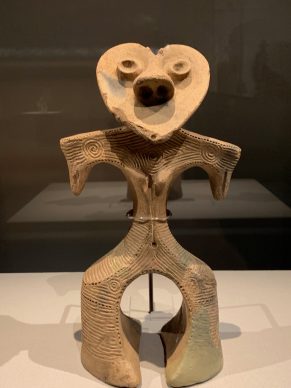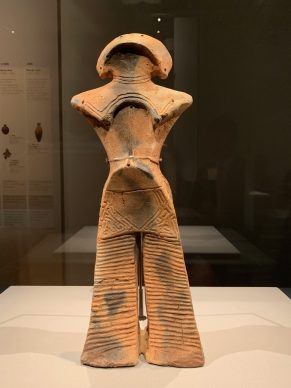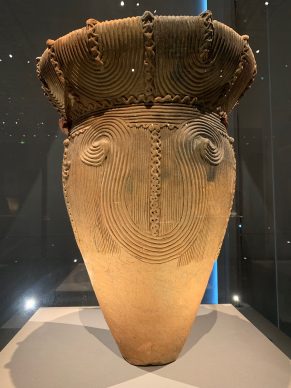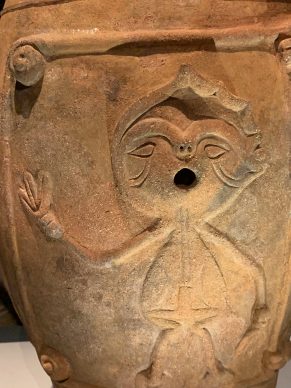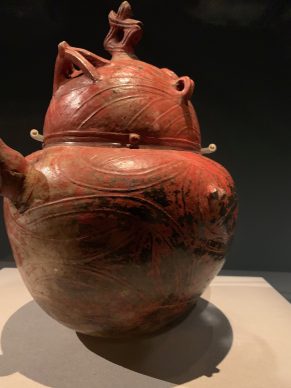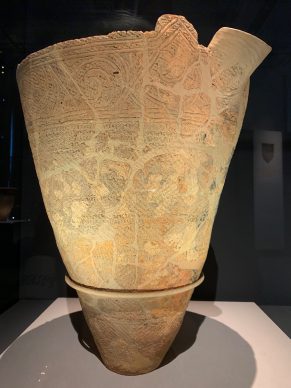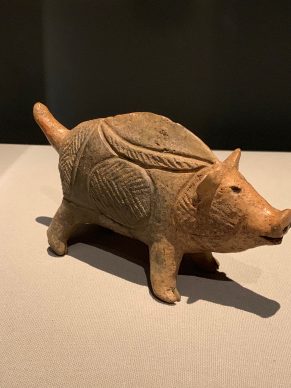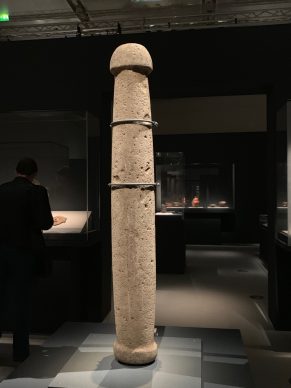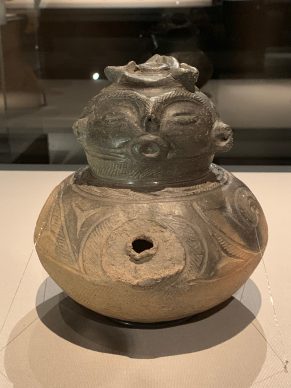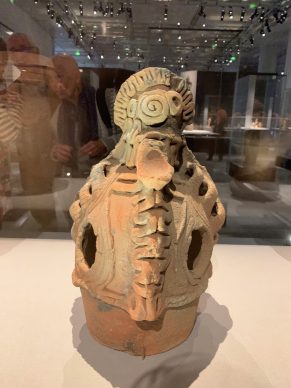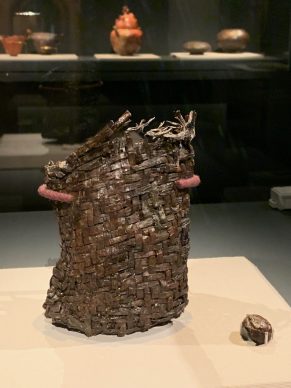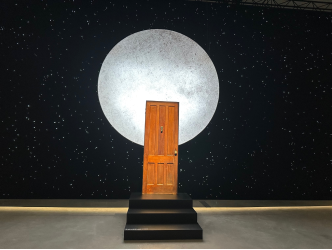In Paris, with relatively little publicity, there are currently no less than six Japanese national treasures which have hardly ever left the former Empire of the Rising Sun and have finally made the journey.
The Maison de la culture du Japon (the Japanese cultural institute in Paris) is exhibiting 64 objects from the Jomon period, a prehistoric civilization established across the entire Japanese territory for nearly 10,000 years from 11,000 BC.
When we talk about prehistory we immediately think of works with a simple aesthetic – which is what we know in the West.
But this is not at all the case for Jomon.
These creations, mainly made from terracotta (plus a few objects in bone and woven or lacquered wood), which are very varied and in some cases highly sophisticated, “emerged in tiny villages where the inhabitants lived as hunter gatherers, in harmony with nature.
They had a mild climate, food in abundance, and wars and other conflicts were largely absent.
The society was matriarchal. There was no State, no agriculture, and no metal materials were used,” explains the curator of the exhibition Yoshiya Shinagawa, director of the department of archaeological research at the Tokyo National Museum.
Indeed, the works they produced are a total anomaly in terms of chronology and geography.
“Japan is known for its pared-back aesthetic, but Jomon on the contrary cultivated extensive ornamentation. These days the young Japanese think Jomon is ‘kawaï’ (1),” points out the curator, who adds: “This is probably the most sophisticated prehistoric aesthetic that we have known on earth.”
Over the course of this long period and in this paradisiacal land, the specialists describe a stylistic evolution in six phases.
One of the most astoundingly beautiful artefacts, a national treasure, is a pottery piece in the form of a flame. The large vase, said to be from Middle Jomon (3000 to 2000 BC), is decorated in its entirety with countless elements moulded onto its surface, likened by those who discovered it to fire.
Another of the “national treasures” from the same period has large ample buttocks, a pretty little stomach, a heart-shaped face, helmet-like hair and a crotch framed by voluptuous thighs which dip in the middle. The “Jomon Venus” is barely 27cm tall and has been formed from disparate pieces assembled together and abundantly polished.
The exhibition closes with everyday objects, from a basket to earrings, which are also astonishingly beautiful.
This is the accomplished aesthetic of a peaceful, environmentally sustainable and most likely happy people, led by women: sounds like a dream.
Until 8 December. www.mcjp.fr
(1) cute
Support independent news on art.
Your contribution : Make a monthly commitment to support JB Reports or a one off contribution as and when you feel like it. Choose the option that suits you best.
Need to cancel a recurring donation? Please go here.
The donation is considered to be a subscription for a fee set by the donor and for a duration also set by the donor.

